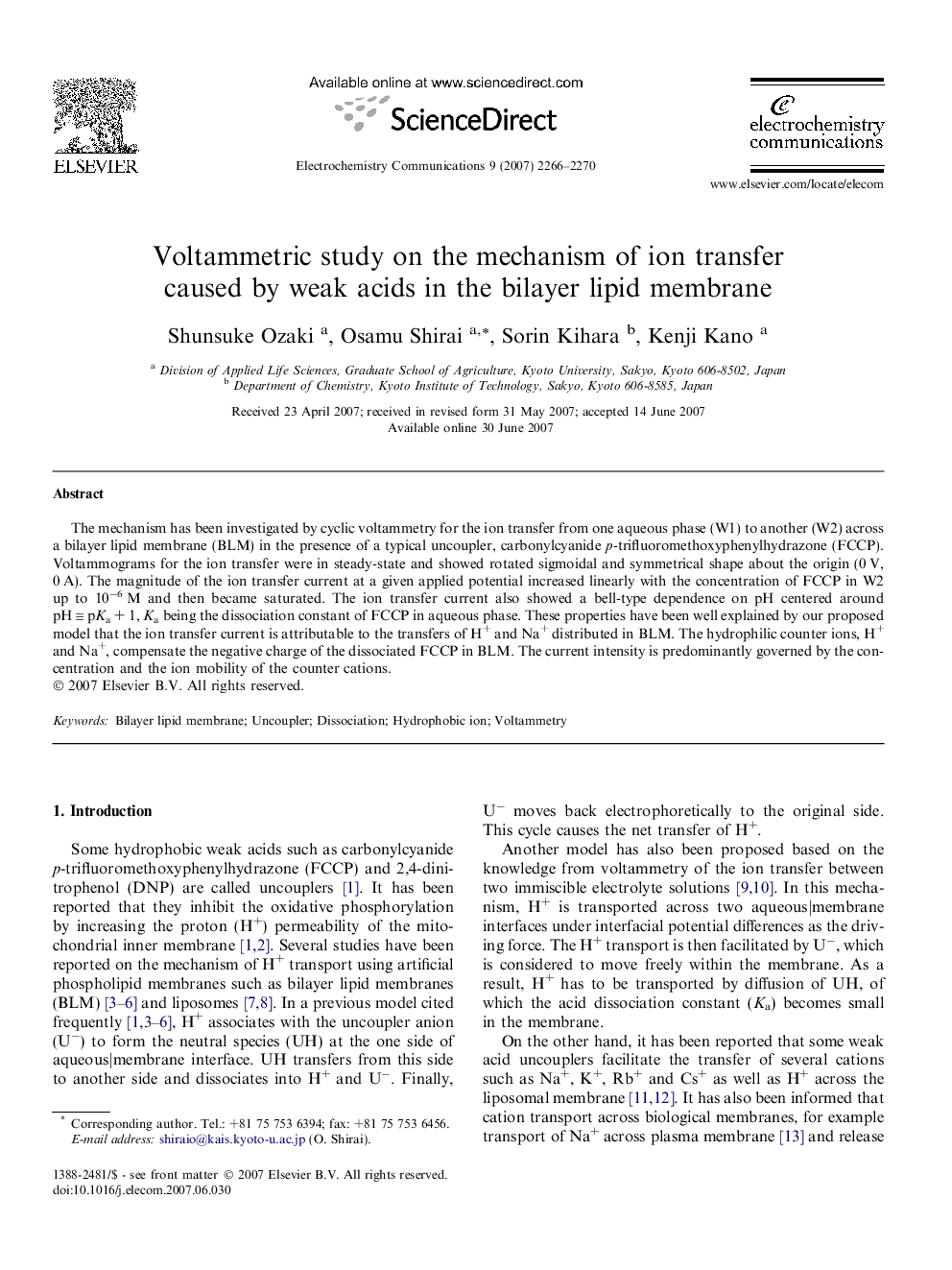| Article ID | Journal | Published Year | Pages | File Type |
|---|---|---|---|---|
| 181944 | Electrochemistry Communications | 2007 | 5 Pages |
The mechanism has been investigated by cyclic voltammetry for the ion transfer from one aqueous phase (W1) to another (W2) across a bilayer lipid membrane (BLM) in the presence of a typical uncoupler, carbonylcyanide p-trifluoromethoxyphenylhydrazone (FCCP). Voltammograms for the ion transfer were in steady-state and showed rotated sigmoidal and symmetrical shape about the origin (0 V, 0 A). The magnitude of the ion transfer current at a given applied potential increased linearly with the concentration of FCCP in W2 up to 10−6 M and then became saturated. The ion transfer current also showed a bell-type dependence on pH centered around pH ≅ pKa + 1, Ka being the dissociation constant of FCCP in aqueous phase. These properties have been well explained by our proposed model that the ion transfer current is attributable to the transfers of H+ and Na+ distributed in BLM. The hydrophilic counter ions, H+ and Na+, compensate the negative charge of the dissociated FCCP in BLM. The current intensity is predominantly governed by the concentration and the ion mobility of the counter cations.
